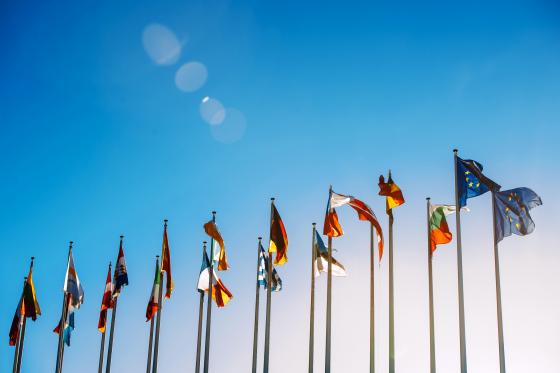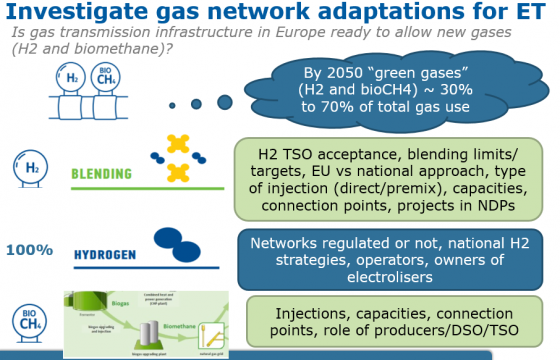Hydrogen (H2) can be an “energy vector" - a fuel or an energy carrier and used for storage.
Low-carbon gases, such as biogas, bio methane, or hydrogen produced via electrolysis by using renewable-generated electricity (from wind, solar, etc.), are important contributors for transitioning towards a less fossil fuel dependent and, ultimately, carbon-neutral energy sector.
As hydrogen does not pollute the air when used, it is considered a vital part of the solution to meet the 2050 climate neutrality goal of the European Green Deal.
The Council of the European Union noted that by 2050 “green gases" – mainly H2 and bio methane – could represent 30% to 70% of total gas use.
For example, hydrogen can help to decarbonise “hard to abate” economic sectors (e.g. heavy transport or energy-intensive industry) where reducing carbon emissions is both needed urgently and hard to achieve. Today, the amount of hydrogen used in the EU remains limited, and it is largely produced from fossil fuels. This is set to change as envisaged in the EU’s Hydrogen Strategy.
Currently, there is little hydrogen infrastructure development. Furthermore, what exists is not covered by the existing EU gas regulatory framework. Existing gas networks could contribute to this energy transition by adapting or repurposing to handle bio methane, admixtures of hydrogen and natural gas, or pure hydrogen.
Europe’s energy transition requires major public and private sector investment. The European Commission took an important first step in the proposed revision of the TEN-E Regulation by including hydrogen transmission infrastructure (new and repurposed), storage and cross-border electrolyser facilities within its scope - a step very much welcomed by ACER-CEER.
To realise the European Green Deal’s ambitions for hydrogen, the right regulatory framework must be created to facilitate a hydrogen economy in a cost-effective way.
See below the ACER-CEER Regulatory White Paper on “When and How to Regulate Hydrogen Networks?”. Furthermore, ACER has surveyed the national regulatory authorities (NRAs) to determine whether and to what extent the national gas networks can be repurposed to transport bio-methane and hydrogen blends, and has commissioned a number of background papers (see below).


